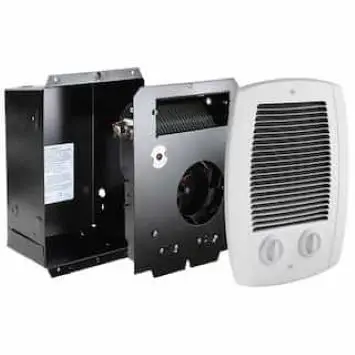What to Expect from the New 2018 California Proposition 65 Warning Requirements
What is Prop 65?

In 1986, California voters approved an initiative to bring awareness to toxic chemical exposure in water supply and consumer products. Formally referred to as Proposition 65, the Safe Drinking Water and Toxic Enforcement Act of 1986 sought to provide a full list of potential chemicals linked to causing cancer, birth defects, and other harmful health effects.
Since it was first published in 1987 by the Office of Environmental Health Hazard Assessment (OEHHA), the list has grown to include over 800 chemicals ranging from synthetic to natural compounds. Each chemical is categorized into carcinogenic (potential to cause cancer), reproductive, or developmental toxicity.
Some of the chemicals listed include additives and ingredients found in pesticides, food, drugs, and dyes, while others are chemicals found in treated metals and plastics.
Recommended Products
What does Prop 65 do?
Prop 65 requires businesses to identify any harmful amounts of chemicals in the products their consumers purchase. In compliance with the People’s Right-To-Know Laws, Proposition 65 helps consumers make more informed decisions regarding the products that they are exposed to.
Before the amendments, Prop 65 warnings only listed that a harmful chemical was used but did not identify the chemical used.
Since amendments have been made to Prop 65, all products manufactured after August 30, 2018, must be labeled with specific, appropriate exposure warnings.
What does this mean for HomElectrical?
To abide by Prop 65 regulations and inform our customers, two of our leading vendors, Cadet Heating and Klein Tools, among others, made some changes to their product labeling.
With the new requirements, all warning labels must include:
- The name of at least one listed chemical
- Link to the Prop 65 site
- A yellow and black, or white and black, triangular warning symbol
Here are some warning labels you could see on your products soon:

What other products may be affected by Prop 65?

HVAC and electrical products can also contain toxic chemicals associated with Prop 65. Products that could have Prop 65 labels also include but are not limited to:
- Heater assembling parts
- Grills
- Built-in thermostats (single pole & double pole)
- Surface mounting kits
- Adapter plates
- Electric baseboard heaters
- Hydronic baseboard heaters
- Garage shop heaters
- Built-in Switches/Receptacles
The OEHHA has a set of “Safe Harbor” levels which refers to the level of exposure a certain chemical possesses. Products with chemical amounts lower than this level are not required to have a warning label.
You can find prop 65 warnings in the following ways:
- manufacturer's label
- workplace signage
- published material (pamphlets, brochures, newsletters)
The main benefit of this new Prop 65 warning is full disclosure between companies and consumers. Overall, they help increase safety and integrity in manufacturing and consumerism, and abiding by them promotes transparent transactions.
Shop HomElectrical and browse a wide selection of Prop 65 abiding products, including LED lighting, HVAC, electrical supply, and more.
Are any businesses exempt from Prop 65?
Yes. Small businesses with less than 10 employees, government agencies, and public water systems are exempt from the warning label requirements.
Are products that carry a Prop 65 label safe to use?
The sole purpose of Prop 65 is to keep consumers informed about toxic chemicals that are known to cause cancer, reproductive, and developmental issues. A warning label doesn’t necessarily mean that a product is in violation of any safety standards, but rather provides full disclosure for consumers.
Should there be any issues regarding product safety, your states’ Department of Public Health, the federal Food and Drug Administration, and the federal Consumer Product Safety Commission will make those regulatory decisions.
Recommended Reading
The National Electrical Code has made some changes that may affect any installations made after September, 1 2017. As of July 1, 2017 twenty states have adopted the 2017 NEC code regulations, and more states are in the process of adopting and implementing the 2017 NEC.
California's joint appendix 8 revision, or JA8, gives the consumer a broader range of energy efficient product choices and becomes effective in January of 2017. This revision defines light fixtures by their level of luminous efficacy, defines the types of light fixtures, sets standard requirements for dimmers and vacancy sensors, and sets home buyer guidelines.
NEMA and UL announced changes for Ground-Fault Circuit Interrupter (GFCI) standards. Find out more about these changes and what they mean for you!
Recommended Products
Receive special deals and more, right to your inbox
Receive special deals and more, right to your inbox







